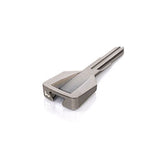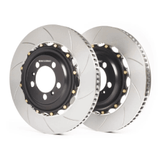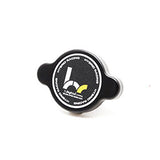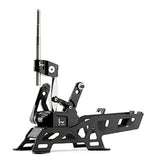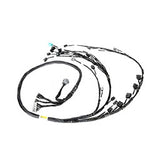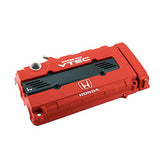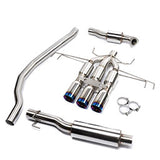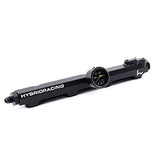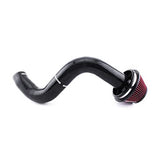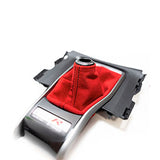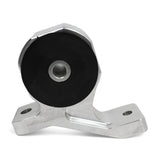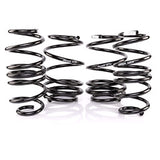PRODUCT DETAILS
KEY FEATURES & BENEFITS
- High-Temperature Performance
Hondabond high-temp silicone liquid gasket 1.9 fl oz is designed to hold up under heat and pressure, making it perfect for critical sealing tasks like valve cover gaskets and oil pan gaskets. - Non-Corrosive Formula:
Unlike some other sealants, Hondabond won’t eat away at aluminum components. This means long-term durability and reliability where it counts. - Trusted OEM Quality:
This product, often referred to by part numbers OHA-08718-0004 or 08718-0004, carries the Honda legacy of excellence. When you use Honda Hondabond silicone liquid gasket, you’re getting the same sealant trusted by the factory. - Consistent Cure Time:
Hondabond drying time is roughly 60 minutes on the surface, transitioning to a rubber-like consistency in about 15-16 hours, with a complete cure in around 3 days. - Versatile Usage:
Whether you’re using Hondabond on a valve cover, oil pan, or any other area that needs a reliable seal, you’ll get a clean finish without needing thick, bulky gaskets.
WHY ENTHUSIASTS LIKE IT
Cars that see track days or spirited driving benefit from Hondabond’s high-temperature range and solid sealing properties. Plus, it’s not uncommon to see it used on a variety of Honda chassis codes—like EF, EG, EK, DC2, and beyond—thanks to its easy application and trusted results. While other brands like Permatex exist (hondabond permatex is a common comparison), many of us stick with Hondabond for the peace of mind it offers on our beloved Hondas.
HOW TO APPLY HONDABOND
Wondering how to apply Hondabond properly? It’s pretty straightforward:
- Clean and prep the surface by removing all oil, dirt, and moisture.
- Apply a thin, even layer of Hondabond (using a brush or putty knife) to the part needing sealing.
- Wait about one minute, then join your surfaces together. How long to let Hondabond dry before full assembly depends on your comfort level—most people tighten bolts within a few minutes of application.
- Always expel air from the tube before closing it up to prevent it from curing inside the container.
If you’re curious how to use Hondabond on an oil pan, the process is the same: a thin bead around the mating surface is typically all you need, but make sure the surfaces are squeaky clean. This approach helps prevent leaks and ensures your Hondabond oil pan gasket stays sealed during high engine stress.
DRYING & CURING TIMES
A common question is how long does Hondabond take to dry and how long does Hondabond take to cure? The surface will begin to set within about 60 minutes, but for a full cure—where it becomes fully rubberized and seals thoroughly—expect around 15-16 hours. If you’re after the absolute best seal, give it around 3 days for complete curing. Hondabond temperature range is also impressive, so it’ll handle day-to-day commutes or track days with ease.
REMOVING HONDABOND
How to remove Hondabond can be a bit tricky if you’re not prepared, but these tips help:
- Nail gel removal fluid or a dedicated gasket remover can soften the old residue.
- Soaking or wiping with petrol, acetone, MEK (methyl ethyl ketone), or methylated spirits can also help.
- Use a white plastic scourer to gently rub off the remnants without scratching the metal.
Just remember, do not apply onto copper or copper alloys in a confined area, as chemical reactions may occur.
FREQUENTLY ASKED QUESTIONS
- Q: What is Hondabond? A: Hondabond is a non-acidic, high-temp silicone liquid gasket designed for areas that don’t require a solid gasket, such as cam plugs and oil pans. It’s part of Honda’s OEM product line and is trusted by enthusiasts worldwide.
- Q: Who makes Hondabond? A: Hondabond is produced by Honda, the same automaker known for reliable and high-performing vehicles.
- Q: How long for Hondabond to dry? A: Surface drying usually occurs in about 60 minutes. For best results, give it a full day (15-16 hours) before subjecting it to harsh conditions.
- Q: How long for Hondabond to cure? A: It’s mostly set by 15-16 hours, but a complete cure can take about 3 days, depending on thickness and humidity.
- Q: How to use Hondabond? A: Clean the surface, apply a thin, even layer, wait about a minute, then join your parts together. That’s it! Also remember to expel air from the tube before sealing it.
- Q: Where to buy Hondabond? A: Hondabond was traditionally something you'd need an account to purchase directly from a dealership, which could be a hassle for many enthusiasts. That's why we decided to carry it ourselves—it's a product we've always kept in our shop, and we wanted to make it easier for you to get your hands on it..
- Q: How to use Hondabond on oil pan? A: The process is the same as any other gasket area: clean thoroughly, apply a thin layer, wait a moment, then fit the oil pan.
- Q: How to remove Hondabond? A: Use solvents like petrol, acetone, or a gasket remover to soften the sealant, then gently scrub it away with a non-abrasive pad.
- Q: What is Hondabond used for? A: Sealing engine components such as valve covers, cam plugs, and oil pans, plus any area that doesn’t require a rigid gasket. It’s known for its flexibility and high-temp resistance.
If you’re passionate about keeping your engine leak-free and want a proven solution, Hondabond gasket maker is definitely worth considering. It sets the benchmark for reliable sealing among the Honda community and beyond—so much that you’ll hear folks comparing hondabond permatex
- Nail Gell removing fluid to slightly soften the remnants
- Rub with a white plastic pan scourer to remove the Hondabond layer
- Soak it in petrol before scraping it off
- Acetone
- MEK (methyl ethyl ketone)
- Gasket remover
- Tri(chloorethyleen)
- Methylated Spirits
